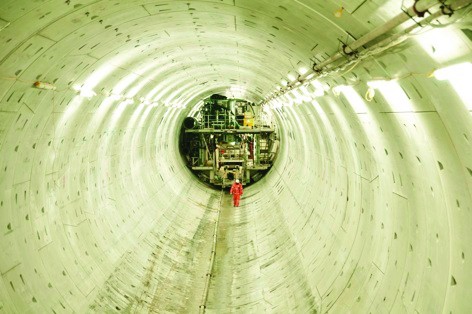Sewage solution: the Thames Tideway tunnel
The proposed Thames Tideway Tunnel aims to keep London clean and healthy well into the 22nd century

Joseph Bazalgette’s London sewers may be the greatest engineering feat of the Victorian age. Comprising almost 900km of tunnels lined with 318 million bricks, the system took just six years to build, during which time seven million cubic metres of earth was scraped out of the city’s underbelly and the River Thames was contained within permanent embankments, creating the landscape of modern London. The sewers diverted the city’s sewage, via huge, elaborate pumping stations in north-east and south-east London, to treatment works and out into the estuary, well downstream of most of the population. In building this system, Bazalgette immeasurably improved public health and the atmosphere of London, banishing the ‘great stinks’ from raw sewage flushed into the river and averting the risk of cholera epidemics, which had plagued the city for centuries.
Part of Bazalgette’s genius was in specifying the capacity of the sewer system. In the late 1860s, when the project began, London was at the tail-end of a population boom, with two million inhabitants. Bazalgette insisted on building enough sewers to cope with four million. But today, London has eight million people, and Bazalgette’s system can’t cope any more. Increasingly frequent overflow events, where untreated sewage spews into the Thames, are damaging the river’s ecosystem and leading to public health concerns. To counter this, a new system is being planned that will see a cavernous tunnel bored under the river, keeping the capital clean and healthy into the 22nd century.
Register now to continue reading
Thanks for visiting The Engineer. You’ve now reached your monthly limit of premium content. Register for free to unlock unlimited access to all of our premium content, as well as the latest technology news, industry opinion and special reports.
Benefits of registering
-
In-depth insights and coverage of key emerging trends
-
Unrestricted access to special reports throughout the year
-
Daily technology news delivered straight to your inbox










Water Sector Talent Exodus Could Cripple The Sector
Maybe if things are essential for the running of a country and we want to pay a fair price we should be running these utilities on a not for profit...